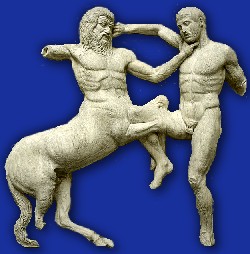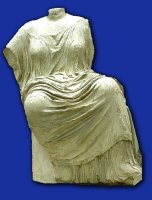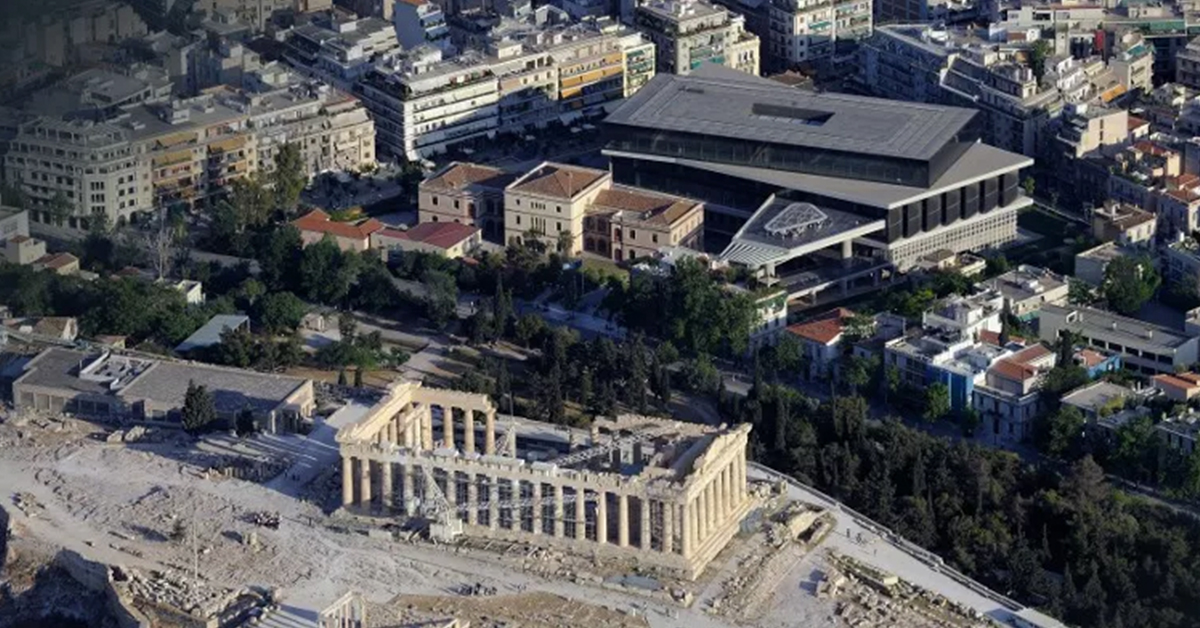Greek Prime Minister Mitsotakis’ London visit, 16-18 November 2021 post UNESCO’s ICPRCP decision 22 COM 6, adopted at its 22nd session held in Paris on 27-29 September, plus UN General Assembly Resolution 76/16 of 06 December 2021.
Greek Prime Minister, Kyriakos Mitsotakis visited London, 16-18 November 2021 and made his plea to Prime Minister Boris Johnson as well as the UK as a whole, for the reunification of the Parthenon Marbles.
Read more about the visit on these links:
No more excuses for the reunification of the Parthenon Marbles
This followed on from the 22nd session of the ICPRCP during their 22nd session 27-29 September in Paris.
To watch the proceeding of the three days, visit: http://webcast.unesco.org/events/2021-09-22ICPRCP/
To read the recommendation and decision regarding the Parthenon Marbles, follow the link here.
The presentation by Greece took place on Wednesday the 28th of September 2021. Greece was represented by the Secretary General of Culture George Didaskalou, the new General Director of the Acropolis Museum Nikolaos Stampolidis, the Head of the Directorate of Documentation and Protection of Cultural Heritage and Legal Adviser of the Ministry of Foreign Affairs, Artemis Papathanassiou. For the first time, apart from the recommendation, a decision with stronger wording was also adopted (Decision 22 COM 6).
The ICPRCP expresses its strong dissatisfaction with the fact that the issue remains unresolved due to the United Kingdom's stance. In addition, it urges the United Kingdom to reconsider its position and enter into a bona fide dialogue with Greece, emphasizing the intergovernmental nature of the dispute.
The UK Government disagreed with this decision and you can read more about that here.
And yet, the support for Greece’s request was as strong as ever. Many articles followed, one to read is Zachary Hardman’s in The Critic, as well as Dan Hick’s in artnet.
On 06 December, the United Nations (UN) General Assembly unanimously adopted a resolution (co-sponsored by 111 UN Member States) introduced by Greece entitled: “Return or restitution of cultural property to the countries of origin”.
Greece's Ministry of Foreign Affairs in a press release notes: "This latest success of our country is part of its tireless international efforts to protect cultural goods in particular, but also cultural heritage in general, from their illegal trafficking both in peacetime and in wartime. In addition, it highlights the need to reintegrate into their historical environment cultural goods that have been stolen and illegally possessed."
It is hoped that this may assist Greece's ongoing diplomatic efforts in persuading the British government and the British Museum to also reunite the Parthenon Marbles that are still in London with those in the Acropolis Museum in Athens.
The Coordinator of this Resolution was Mrs Artemis Papathanassiou, Senior Legal Advisor at the Greek Ministry of Foreign Affairs who presided over the relevant negotiations.
An offer that would be difficult to refuse:
In 2000, Greek officials invited their colleagues at the British Museum to join them with the aim of reuniting the surviving sculptures in one place: in the Acropolis Museum. A museum that has been expressly built in order to house all of the surviving Parthenon sculptures.
Mr. Evanghelos Venizelos, the then Greek Culture Minister pledged that when the Parthenon sculptures are returned, the Greek Government will make sure that the Duveen Galleries would always host Greek antiquities on loan for exhibitions. Greece would be willing to send rare and even newly discovered antiquities, which have never been seen outside Greece.
In June 2018, the then Minister of Culture, Lydia Koniordou met with her UK counterpart the Secretary of State, Media and Sport, Matt Hancock and undersecretary of State for culture Michael Ellis to discuss the sculptures from the Parthenon. The Greek Minister highlighted the cultural and ethical dimensions of the division of the Parthenon Marbles, plus the respective recommendation by UNESCO’s Intergovernmental Committee for Promoting the Return of Cultural Property to its Countries of Origin or its Restitution in case of Illicit Appropriation (ICPRCP), which took a clear stance on the highly debated issue of these unique sculptures. Following Minister Koniordou’s London talks, Prime Minister Tsipras also visited London at the end of June 2018 for talks with Prime Minister Teresa May and once again the matter of the division of the fragmented Parthenon Marbles was raised. On 20 August 2018, Minister Koniordou wrote to Jeremy Wright, UK’s new Secretary of State for Culture, inviting him to Athens to begin new talks on the reunification of the sculptures from the Parthenon.
From 28 August 2018 following a cabinet reshuffle by Prime Minister Tsipras, Myrsini Zorba became Greece’s new Minister of Culture.
BCRPM would like to personally thank Lydia Koniordou and the team of advisors accompanying her at the time, Professor Pandermalis (Acropolis Museum), Artemis Papathanasiou (MFA) and Christoforos Argyropoulos (Melina Mercouri Foundation) for their dedicated efforts to begin new talks with the UK government and the British Museum, and looked to Myrsini Zorba to continue to pursue the matter. The fragmented sculptures from the Parthenon, currently mainly divided between two great museums, deserve collective respect – for the good of the world.

They should be relocated in Athens.
The Parthenon Symbol of Greek Cultural Heritage
The Parthenon is the most important symbol of Greek cultural heritage and according to the declaration of universal human and cultural rights the Greek State has a duty to preserve its cultural heritage in its totality, both for its citizens and for the international community. Therefore the request for the reunification of the sculptural elements of the Parthenon is ipso facto a rightful if not a legitimate request.
The display of the sculptures at the Duveen Galleries of the British Museum is unsatisfactory.
The Parthenon sculptures are not properly displayed at the British Museum. Not only they appear as if they form a whole, which they are not - as there is no indication where the missing slabs should have been. They are also exhibited on the inside of a wall. The purpose and aim of the freeze was to portray a procession that ran all along the outside walls of the Cella building. The Acropolis Museum corrects all this. The museum has re-housed the Marbles and visitors view these unique objects at their greatest advantage and close to their original position.
Caring for the Marbles
The British Museum have always claimed that the sculptures were very well cared for. Yet in the 1930s the sculptures were "cleaned" under the wrong belief that they were originally "brilliant white". The so-called cleaning was never the intention of the curators who knew very well that the sculptures made out of Pentelicon marble would have acquired a mellow honey colour when exposed to the air. Moreover the sculptures showed clear traces of colour that the scraping destroyed. The cleaning was done at the instruction of Lord Duveen who financed the building of the galleries for exhibiting the Marbles. The cleaning carried out with wire brushes, copper tools and carborundum caused serious and irretrievable damage that was admitted by the authorities of the Museum. However, the British Museum officials kept the full report on the incident carefully under wraps until a Cambridge historian revealed it in his book "Lord Elgin and the Marbles, Oxford University Press, 1998."
They should have never been removed.

The Parthenon Marbles an Integral Part of a Famous Monument
The Parthenon Marbles - or more precisely, the sculptures from the Parthenon are not freestanding works of art but integral architectural members of one of the most magnificent and best-known monuments in the world: the Parthenon. It is the biggest building on the Acropolis of Athens and was designed and built by the architect Iktinos and the sculptor Pheidias in the 5th c. BC. It was erected to celebrate the victory of the Athenian Democracy that encouraged the creation and development of all the arts as well as of politics, philosophy, theatre and even science as we know them to day. So, the Parthenon is the celebration of the achievements of free, democratic people and for that reason it is an important symbol to the whole world.
That is why it is inconceivable that over half of its celebrated sculptural elements should be exhibited 2000 miles away from the rest and from the actual monument for which they were expressly designed and carved.
The Removal of the Sculptural Elements from the Parthenon
Furthermore, these architectural members were removed from the monument - actually hacked off, without the consent of the Greek people, who at that time were still under the Ottoman occupation. Shortly after the removal of the sculptures the Greeks began their war of independence and with the help of Western powers, including Britain, gained their freedom and established the new independent nation state of Greece in 1830.
Lord Byron was one of the greatest supporters of the Greek war of independence and died at the siege of Messolonghi in 1824. He was also one of the first and most virulent critics of Lord Elgin's actions.

The Legality of the Acquisition
The British Museum have always insisted that the Marbles were legally acquired from the then authorities of Athens. Actually distinguished scholars have challenged the legality of the acquisition in recent years. Other evidence has also come to light showing that even the Ottoman authorities themselves queried Lord Elgin's right to remove architectural parts from a building and ship them to Britain.
Ongoing Developments
Through the centuries, there have been regular and numerous examples of removal or displacement of cultural objects from their countries of origin. The practice of removing artefacts of significant importance to a nation’s history and cultural identity from their place of origin is increasingly acknowledged by the international community as unethical, even if this view is still not always reflected in attitudes and legislation.
In the framework of the UN and in particular UNESCO, an Intergovernmental Committee ‘for Promoting the Return of Cultural Property to its Countries of Origin or its Restitution in case of Illicit Appropriation’, the ICPRCP, was established 1978, in order to deal with the restitution of cultural property removed from the countries of origin before 1972, due to foreign or colonial occupation.
The Committee is an independent intergovernmental body with an advisory role, which provides a platform of negotiation, mediation and conciliation between the parties concerned and acts, on the one hand as a facilitator for the restitution of important cultural objects and, on the other hand, as a permanent space for the exchange of experience, good practices and advocacy. Moreover, the Committee constitutes a forum for a non-judicial settlement of disputes and may be used only in cases of failure or interruption of bilateral negotiations for the restitution of cultural property. At the end of each of its Sessions, the Committee issues its concluding documents in the form of Decisions or Recommendations which reflect the most important issues that have been discussed and decided upon.
The Parthenon Marbles, which were looted, in early 19th century, by Lord Elgin, the British Ambassador to Constantinople, at the time capital of the Ottoman Empire, and are now exhibited at the British Museum in London, constitute one of the most important agenda items of the Committee, lodged with it in 1983 and still pending. In procedural terms, the negotiations within the ICPRCP are conducted between Greece and the UK (Board of Trustees of the BM and UK Ministry of Culture) under the good offices of the Committee, acting as a facilitator to this very long-standing affair. A Recommendation on the progress of the relevant negotiations is adopted by the Committee at the end of each of its Sessions. Between 1983 and 2018, the ICPRCP adopted at least 17 Recommendations on the Marbles, (in 1983, 1989, 1991, 1994, 1997, 1999, 2003, 2005, 2007, 2009, 2010, 2011, 2012, 2014, 2016, 2018 and 2021) which, among others, call upon Greece and the UK to intensify their efforts with a view to reaching a satisfactory settlement of this long-standing issue.
The Recommendation of the ICPRCP on the Parthenon Sculptures (UNESCO, 21st Session of the ICPRCP, 31-05-2018) was of utmost importance because for the first time the ICPRCP calls upon Greece and the UK to intensify their efforts with a view to reaching a satisfactory settlement of this long-standing issue, taking into account its historical, cultural, legal and ethical dimensions, while recalling that the Acropolis of Athens is an emblematic monument of outstanding universal value, inscribed in the World Heritage List .
This intensified and went further with the Recommendation and Decision taken at the 22nd Session, held from 27-29 September 2021 held at UNESCO Headquarters in Paris (Room XI) and online.
The Greek Request for Mediation
In July 2013, at a meeting between the Greek Minister of Culture and Sports, Panos Panagiotopoulos and UNESCO’s Director-General, the Minister requested that UNESCO deploy its good offices to encourage the UK to take part in a mediation process with a view to resolving the longstanding issue of the Parthenon Sculptures. In response to this, UNESCO sent an official letter to the to the UK Secretary of State, to the Secretary of Culture and to the Director of the British Museum, requesting that the UK enters into mediation with Greece.
It was only on 26 March 2015, namely almost two years after the dispatch of the UNESCO’s official letters, that the UK Government and the Trustees of the British Museum replied in separate letters addressed to the UNESCO Assistant Director General for Culture. Both letters rejected the initiative and refused to engage in any effort to reach a mediated solution, stressing, among others, that the Parthenon Sculptures in the British Museum were legally acquired by Elgin under the laws then prevailing, that the Trustees of the British Museum have had clear legal title to the sculptures since 1816 and that the Greek request for mediation was made in order to seek the transfer of the Sculptures to Athens and deny the British Museum’s right to ownership.
The Greek Government’s Response to the Rejection of its Request
A few weeks after the disclosure of the British Government’s and British Museum’s formal letters to UNESCO refusing the mediation process, the Greek Culture Minister at the time responded to the British resounding “NO” with a public Statement, pointing out that the lack of willingness for cooperation and dialogue from the British side seems to ignore the related recommendations of the ICPRCP, a UNESCO body. The Greek Minister also stressed that “The negativism and lack of due respect to the good services of the mediators is striking. The unilateral and continuing effort to degrade the transnational issue in question to an issue between museums is also striking. The Greek Government will continue its efforts in every way possible and resubmit the issue anew to the UNESCO General Director, in anticipation of their reaction to the way Britain has handled the situation thus far”. “We ask Great Britain to reconsider its position. Greece remains open to every possible gesture”, the Statement concluded.
United Nations and International Conferences ‘on the Return or Restitution of cultural property to the countries of origin’
The General Assembly Resolution A/76/16 (06-12-2021)
A recent important development that is worth taking note of, in concluding, is the unanimous adoption, on 06-12-2021, by the UN General Assembly of Resolution A/70/76 on the ‘Return or Restitution of Cultural Property to the Countries of Origin’.
Of a major importance is operative paragraph 7 of the Resolution which recognizes the recent institution of International Conferences on ‘the Return or Restitution of Cultural Property’ (held respectively in Seoul, Republic of Korea/July 2011 and October 2012, Ancient Olympia, Greece/October 2013, Dunhuang, China/September 2014 and Nevşehir, Turkey/October 2015) as well as their concluding Declarations or Recommendations.
The unanimous recognition of this new institution by a Resolution of the UN General Assembly constitutes the uncontested victory of the continuous collective efforts of the so called “exporting” States, namely States suffering from the looting and illicit traffic of their cultural property, to achieve restitution.
Resolution A/76/76 was introduced and facilitated by Greece and was co-sponsored by 111 UN member States.
It has also to be underlined that a significant number of States within the UN and the International Conferences ‘on the Return or Restitution of Cultural Property’ have consented to the adoption of not a few Resolutions and Recommendations stating that “the Parthenon Sculptures should be returned to Athens”.


Comments powered by CComment